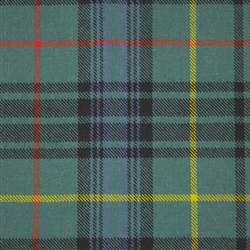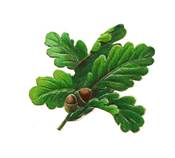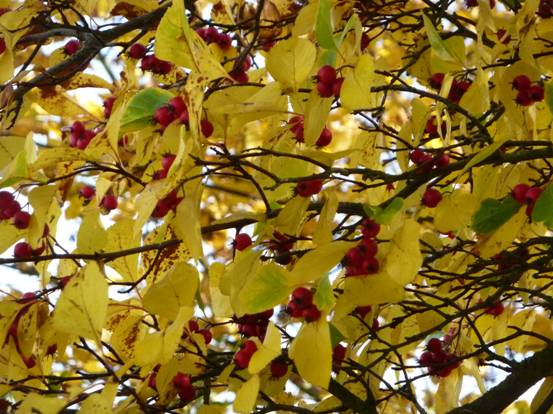
Salty Sam’s Fun Blog for Children
Number 241
Tartan
Hello Everyone

Well, it had to happen one day.
Cousin Hamish’s bagpipe playing has become too much for his neighbours!
He has been banished from the neighbourhood.
Well, not completely – just his bagpipe playing.
The neighbours suggested that he go and have a walk on the cliff tops. lt could have been a walk off the cliff tops but let us give them the benefit of the doubt.
Hamish couldn’t hear their shouting very well at the time – because he was playing his bagpipes.
He actually loves playing them up there. The walk across the windblown grass reminds him of his highland home – and after all it is quite usual for bagpipes to be played whilst walking.
When he goes up there he wears his kilt as well. You will be familiar with the kilt.
The fabric it is made from is called tartan.
Tartan is a lovely, warm fabric with a chequered pattern of different coloured threads. lt can be made to make kilts or trews (trousers) and hats.
You might be surprised to know that people have had the technology to weave fabric like this for over two thousands years – before the Roman occupation.
Historically, tartan was the everyday wear of Highlanders for several centuries and it was made locally. The fabric was made from sheep’s wool.
Wealthier families could afford brighter-coloured dyes. Tartan was worn in other parts of Scotland too.
The colours of this cloth were originally the natural colours of the sheep: black, white and brown. But it was discovered that dyes could be made from things found locally, so new colours were used in the cloth making: yellow from the birch tree and orange from heather, blue and purple from berries and red from the flower of tormentil.
ln order to fix a dye into a fabric, a special substance has to be added as well. This is called a ‘mordant’. The Highlanders could obtain iron mordanting from black peat bogs.
Traditionally, the patterns were passed down through families. Eventually, the area a person came from could be identified by the pattern of tartan they were wearing. lt was a symbol of clan kinship. The colours of the tartan came from what was growing in that region.
The distinctive pattern of squares and lines on an individual tartan is called a sett.
ln 1746, the wearing of tartan was banned in an attempt to bring the warrior clans under government control. But when the law was repealed in 1782, tartan was adopted as the symbolic national dress of Scotland.
With the introduction of chemical dyes to the weaving industry, even brighter-coloured tartans could be made.
Nowadays, it is worn all over the world and is loved by fashion designers. There are about 30 million people around the world of Scots decent.
lf you have Scottish blood in your family, you will probably want to know which is your family tartan – or you might want to say ‘clan tartan’. A clan was a group of people that answered to a clan chief.
Your surname might be a sept of a clan. A sept is a family name that relates to a clan.
Tartan is now worn by certain army regiments and was claimed by the punk movement started in the 1970s as part of their distinctive fashion.
lt is worn by the royal family and has been popular with them since the reign of Queen Victoria – and before, when the visit of George lV to Edinburgh in 1882 started a tartan revival. The king thought that it would be a good idea for people to attend official functions wearing their tartans. A lot of traditional designs had been lost when weavers died and the wooden sticks that the patterns were recorded on with weavers markings rotted away, so new designs were invented.
There are over 5,000 tartans in existence and still new ones are being produced at a rate of about 135 or more a year. The Scottish Register of Tartans is Scotland’s official tartan register.
Almost all Scottish clans have several tartans attributed to their name and several clans have ‘official’ tartans. Anyone can create a new tartan and name it – but only a chief can declare it as an official tartan of a clan.
Most provinces and territories in Canada have an official tartan.
Canada has a national tartan too.
Many states in the United States have official tartans.
There are chief tartans (just for the chief of a clan), clan tartans (for everyone in the clan), hunting tartans (usually of dark hues), dress tartans (originally worn by women and often worn nowadays when dancing) and mourning tartans (generally black and white).
A universal tartan can be worn by anyone: Black Watch and Hunting Stewart are two examples.
Some modern tartans are protected by a trademark law and cannot be used by anyone who doesn’t own the right to use it, for example the Burberry Check.
Otherwise, although there are traditional guidelines about wearing tartan, for example you should not wear the Balmoral Tartan if you are not a member of the royal family, there are no laws preventing people from wearing any tartan they want to.
Bye bye everyone – don’t forget to subscribe to my blog!
lf you like my blog, please support it by telling all your friends and followers about it.
Thank you!
And see you again next Fun Friday!
Love and kisses
Salty Sam

www.christina-sinclair.com


Bill and Bob’s Joke of the Week![]()
![]()
Bob: What do you call a Scottish parrot?
Bill: A Macaw!

Salty Sam © Christina Sinclair 2015
Unauthorized use and/or duplication of material from this blog without express and written permission from this blog’s author and owner is strictly prohibited.
Links may be used to www.christina-sinclair.com

Picture Gallery
 Tormentil
Tormentil
 Black Watch
Black Watch
 A sporran is a purse
A sporran is a purse
 Trews
Trews
 Punk fashion
Punk fashion
 Hunting Stewart
Hunting Stewart
 Canada Tartan
Canada Tartan
 Balmoral Tartan
Balmoral Tartan
 Burberry boots
Burberry boots



 THE SALTY SAM NEWS DESK
THE SALTY SAM NEWS DESK

This week we went for a walk in the woods behind Auntie Alice’s cottage.

Blackberry leaves and ivy leaves
The leaves are really turning into their autumn colours.
Do you know which trees these leaves come from?
1.

2.

3.



Yellow leaves and red berries

*********************
TO ADVERTISE ON THIS BLOG
PLEASE CONTACT:
christina.sinclair.ads@aol.co.uk
*********************


Quick Quiz
And here are four more column word puzzles for you to do.
Draw four columns of boxes – they should be four boxes across and four boxes down.
Answer the questions and put one letter in each box to find four colours reading downwards.
- the outside covering of a tree trunk
- use them to kiss with
- once _ _ _ _ a time
- the opposite to odd
- a big smile
- falls from the clouds
- one each side of your head
- the Earth goes around the Sun once in one of these
- peas grow in these
- it would come out of your brain
- the back of your neck
- a toy that flies in the sky
- animals that look like monkeys but they don’t have tails
- a person that has three brothers or sisters that were born at the same time
- one portion or part or module or section
- the highest point or tip




lt’s the Weekend!

HOW TO MAKE EMBROlDERED BAUBLE CUBES
These beautiful cubes look lovely with their criss cross pattern of colours.
You can put the hanging loop into the centre of the top or into one corner so that the cube hangs diagonally.
You will need 1 sheet of 7 mesh 10.5 by 13.5 inches/26.7 by 34.3cm to make 3 cubes.
Cut 6 panels 15 by 15 holes

- Using dk yarn embroider on red crosses then green crosses then white diagonal crosses – see photograph
- Sew around the centre pattern with white yarn
- Crochet 30 chains into a length of green yarn to make a hanging loop
- Tie a knot at the base of the crochet and thread the ends of the yarn into each side of the centre of one of the panels (not in exactly the same place) – then tie the ends together to secure in place on the back side of the work
- Sew the panels together
- Then when you make the next cube you can swap over the red and green to create a different look
*Make sure that all your stitches and panels lie in the same directions as you work to ensure a neat finish to your work.
Before you close the top of the cube, you could put a little round bell inside if you would like to so that your cube will jangle.
Although you can see the plastic canvas showing through the canvas work stitches in the photograph, you will not see it that much on your finished article.






Please note that the material on this blog is for personal use and for use in classrooms only.
It is a copyright infringement and, therefore, illegal under international law to sell items made with these patterns.
Use of the toys and projects is at your own risk.
©Christina Sinclair Designs 2015

Answers to the News Desk Quiz
- Maple
- Oak
- Horse chestnut



Quick Quiz Answers
- BARK
- LlPS
- UPON
- EVEN
- GRlN
- RAlN
- EARS
- YEAR
- PODS
- lDEA
- NAPE
- KlTE
- APES
- QUAD
- UNlT
- APEX

And let’s finish with a song…
https://www.youtube.com/watch?v=-DVoVXxtbpo


